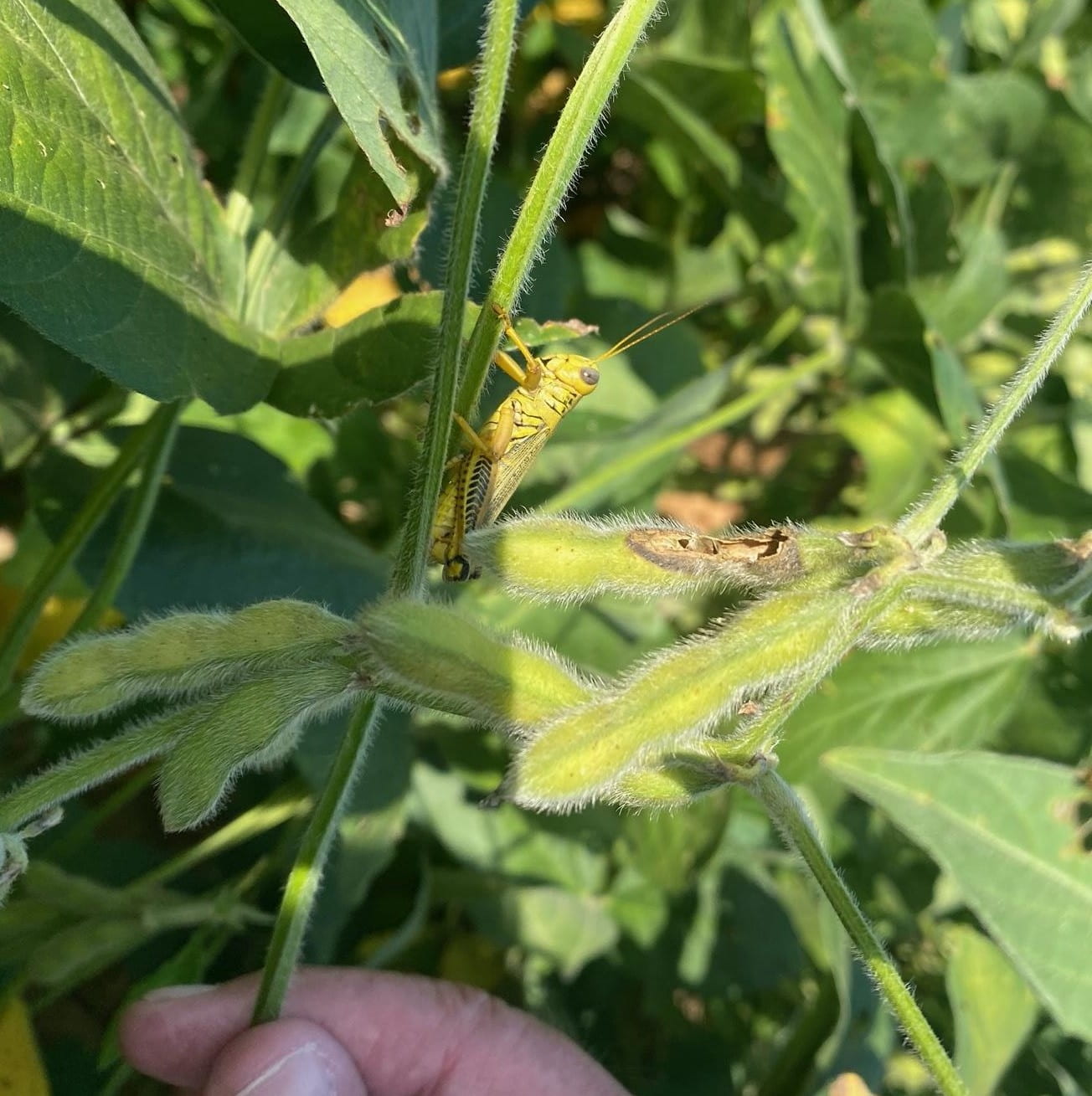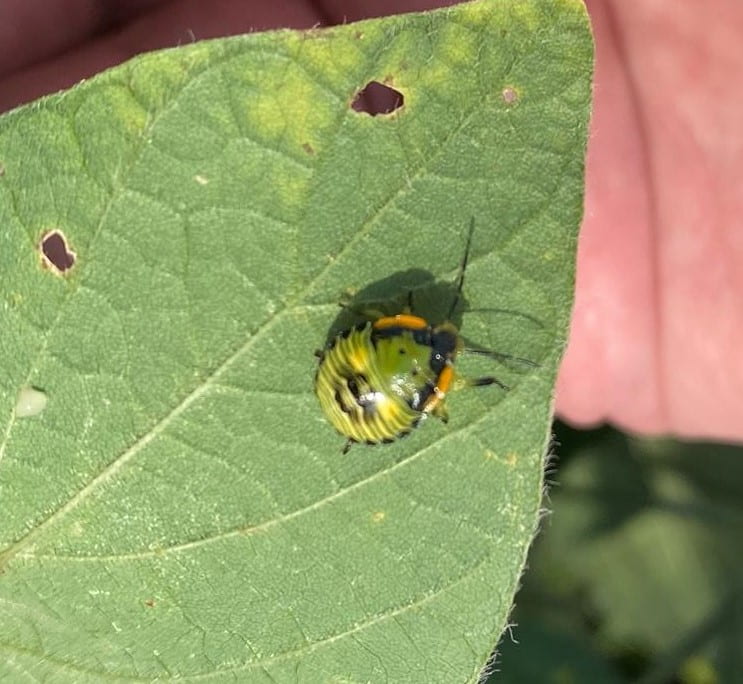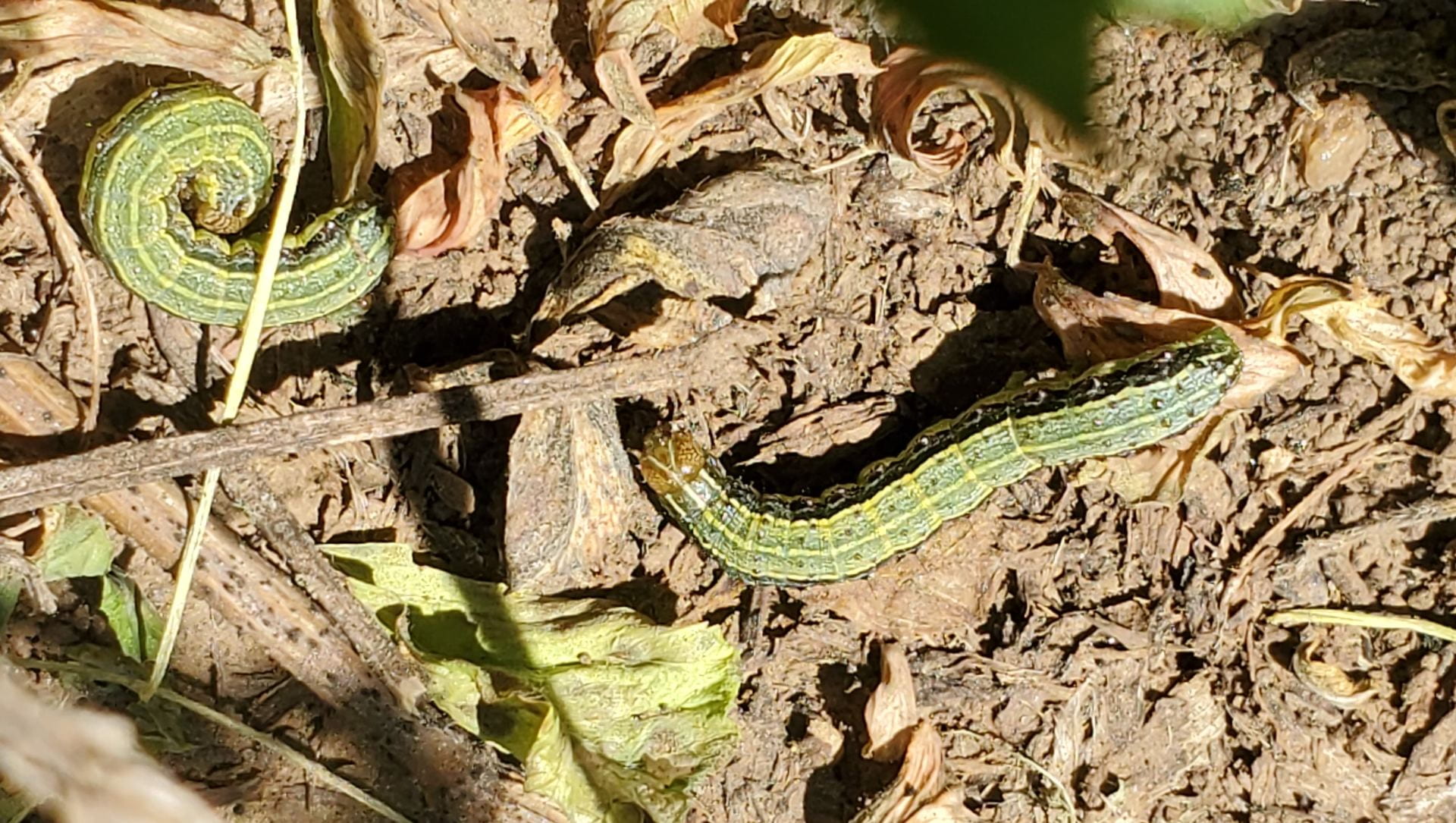–by Jeff Whitworth — Field Crop Entomologist
The ongoing hot dry conditions seem to be starting to significantly stress many dryland crops. Then when you add in the stress of an insect pest it can really cause problems. Right now, blister beetles and Dectes stem borers are very active and causing concerns. Many growers seem to be confusing the two–adult Dectes with blister beetles–with good reason, as some blister beetle adults are similarly colored and shaped somewhat like adult stem borers. The two blister beetles most commonly confused with Dectes stem borer adults are shown here at the top, and just above (see fig. 1) a stem borer adult (photo by JR Ewing). Blister beetles may cause some defoliation by eating leaf tissue but it is usually insignificant. However, Dectes are currently still depositing eggs in soybean petioles, and have been for 2-3 weeks, where the small larvae hatch and start boring into the stem, most often causing the stem to die (see fig 2). However, the larvae continue this tunneling/boring into the main stem (see fig 3) and eventually end up just below ground where they remain through the winter. (Figures 2 & 3 pictures provided by Sean Mills)

Figure 1: Two adult blister beetles on the top-adult and adult Dectes stem borer at the bottom left.

Figure 2: Crop damage from Dectes stem borers

Figure 3: Tunneling/boring stem damage


















